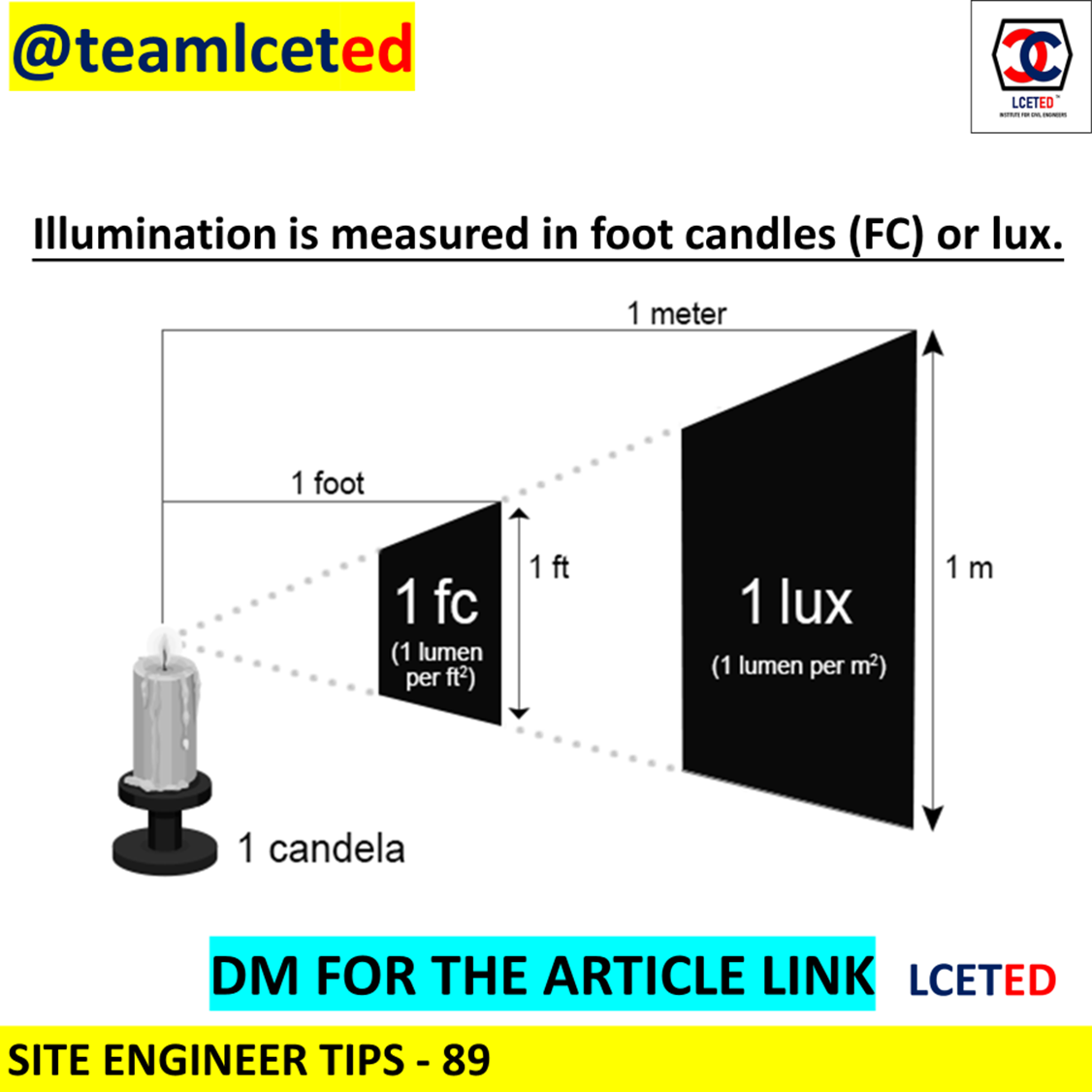Lighting in the places we live, and work is critical to our ability to work efficiently and safely. Plus, proper lighting conditions prevent eye strain, allowing you to work comfortably for long periods of time. This article describes proper lighting conditions and various lighting concepts during a conversation.
While light intensity is important to reduce eye strain, architects and designers must also consider color temperature. Temperature affects a person's alertness. Humans are more alert in midday blue light and more relaxed in the warm light morning and evening light.
We need to understand two main concepts when planning a building's lighting level:
· lighting level
· lighting power density.
light levels in buildings
Since we mainly work on our buildings, we need to understand the illuminance or the amount of light falling on the surface. In an office, we may want to understand the amount of light falling on our desks; However, in a gym or hallway, we may be more interested in the amount of light hitting the floor.
Illumination is measured in foot candles (FC) or lux.
1 FC is the amount of light that falls on a surface of 1 square foot when 1 lumen is shone from 1 foot away this equals 1 lumen per square foot.
1 lux is the amount of light that falls on a surface of 1 square meter when illuminated by 1 lumen from 1 meter away this equals 1 lumen per square meter.
10 lux is approximately 1 FC.
It should provide enough light to allow people to complete their tasks, but not so much light that tasks are difficult to see - too much light is just as bad as too little light. Detailed tasks like drafting require a lighter, while simple tasks like walking can be done in dim light.
The IESNA Lighting Handbook, published by the Illuminating Engineering Society, is the most cited reference for illuminance levels. Listed below are the lighting conditions manual and various lighting tips.
Note: Lumens: The total output of visible light from a light source is measured in lumens. Typically, the more lumens a light fixture provides, the brighter it is. One lux is equal to one lumen per square meter (lux = lumens/square meter).
Light Power Density
Lighting power density or LPD is the lighting load in watts/square foot (or watts/square meter). Lighting power density technically refers to a load of any lighting equipment in any defined area.
Recommended Light Levels by Space
ROOM TYPE | LIGHT LEVEL (FOOT CANDLES) | LIGHT LEVEL (LUX) |
Cafeteria - Eating | 20-30 FC | 200-300 lux |
Classroom - General | 30-50 FC | 300-500 lux |
Conference Room | 30-50 FC | 300-500 lux |
Corridor - General | 5-10 FC | 50-100 lux |
Corridor - Hospital | 5-10 FC | 50-100 lux |
Dormitory - Living Quarters | 20-30 FC | 200-300 lux |
Exhibit Space (Museum) | 30-50 FC | 300-500 lux |
Gymnasium - Exercise / Workout | 20-30 FC | 200-300 lux |
Gymnasium - Sports / Games | 30-50 FC | 300-500 lux |
Kitchen / Food Prep | 30-75 FC | 300-750 lux |
Office - Private / Closed | 30-50 FC | 300-500 lux |
Parking - Interior | 5-10 FC | 50-100 lux |
Restroom / Toilet | 10-30 FC | 100-300 lux |
Retail Sales | 20-50 FC | 200-500 lux |
Stairway | 5-10 FC | 50-100 lux |
Storage Room - General | 5-20 FC | 50-200 lux |
Workshop | 30-75 FC | 300-750 lux |
Laboratory (Classroom) | 50-75 FC | 500-750 lux |
Laboratory (Professional) | 75-120 FC | 750-1200 lux |
Library - Stacks | 20-50 FC | 200-500 lux |
Library - Reading / Studying | 30-50 FC | 300-500 lux |
Loading Dock | 10-30 FC | 100-300 lux |
Lobby - Office/General | 20-30 FC | 200-300 lux |
Locker Room | 10-30 FC | 100-300 lux |
Lounge / Breakroom | 10-30 FC | 100-300 lux |
Mechanical / Electrical Room | 20-50 FC | 200-500 lux |
Office - Open | 30-50 FC | 300-500 lux |







No comments:
Post a Comment